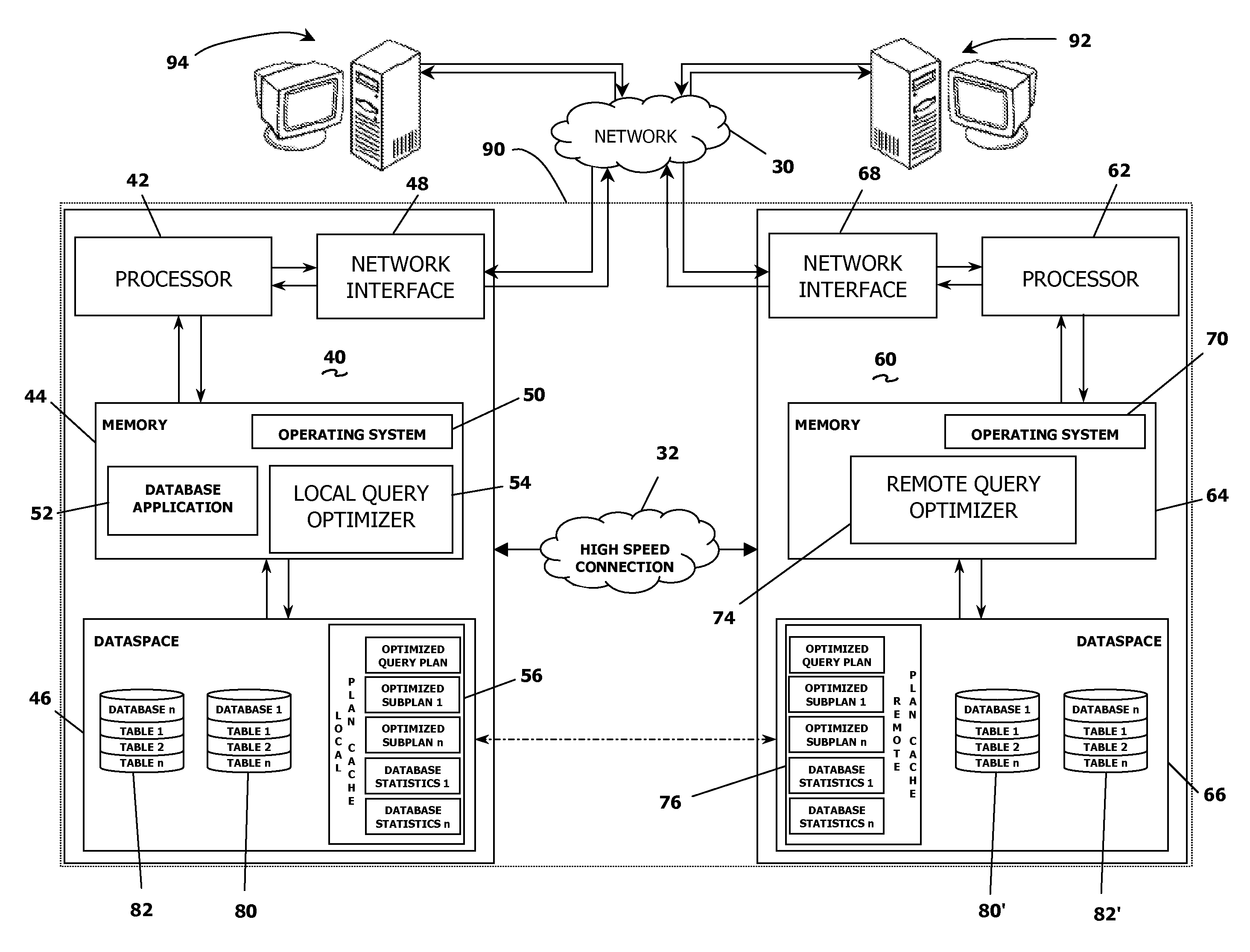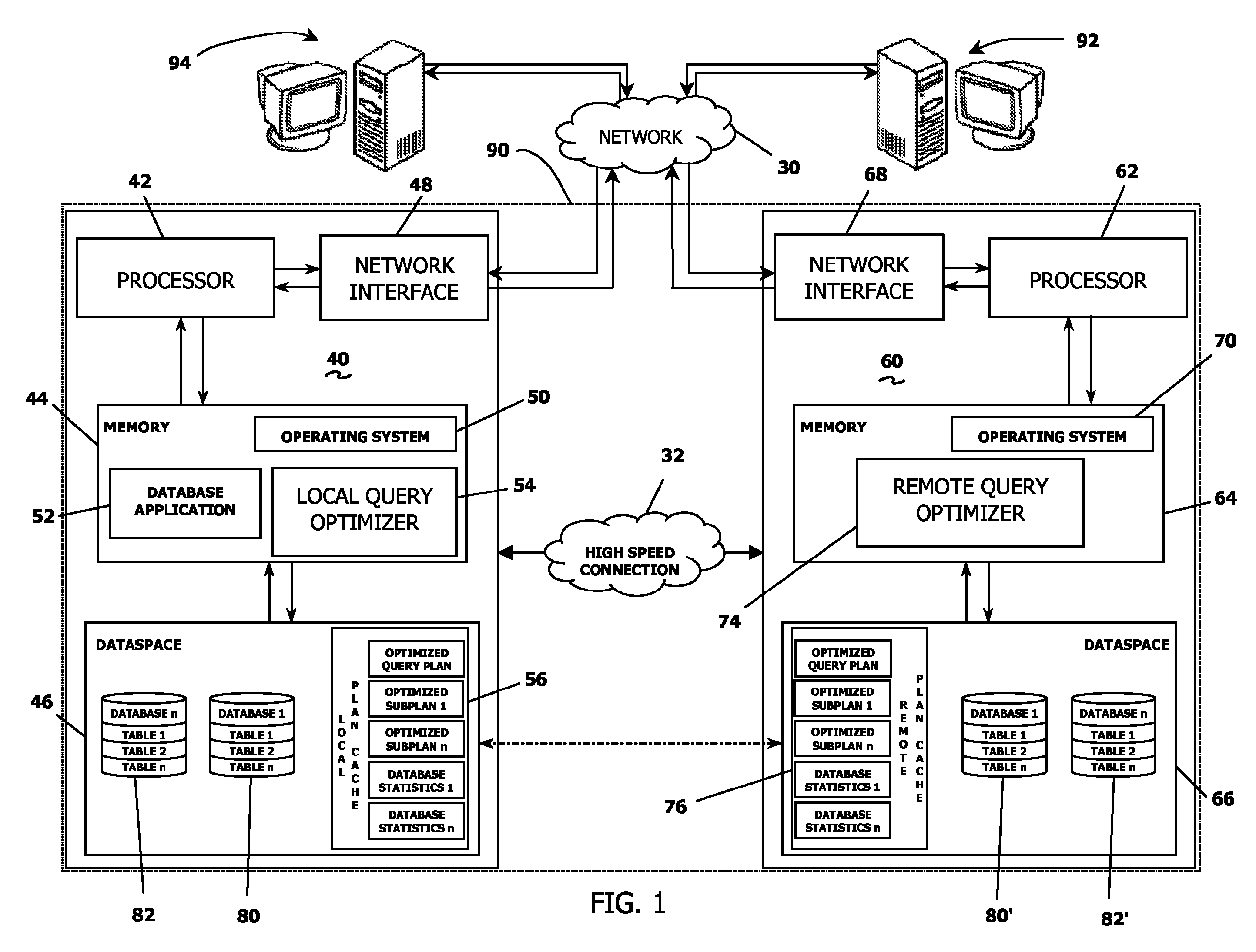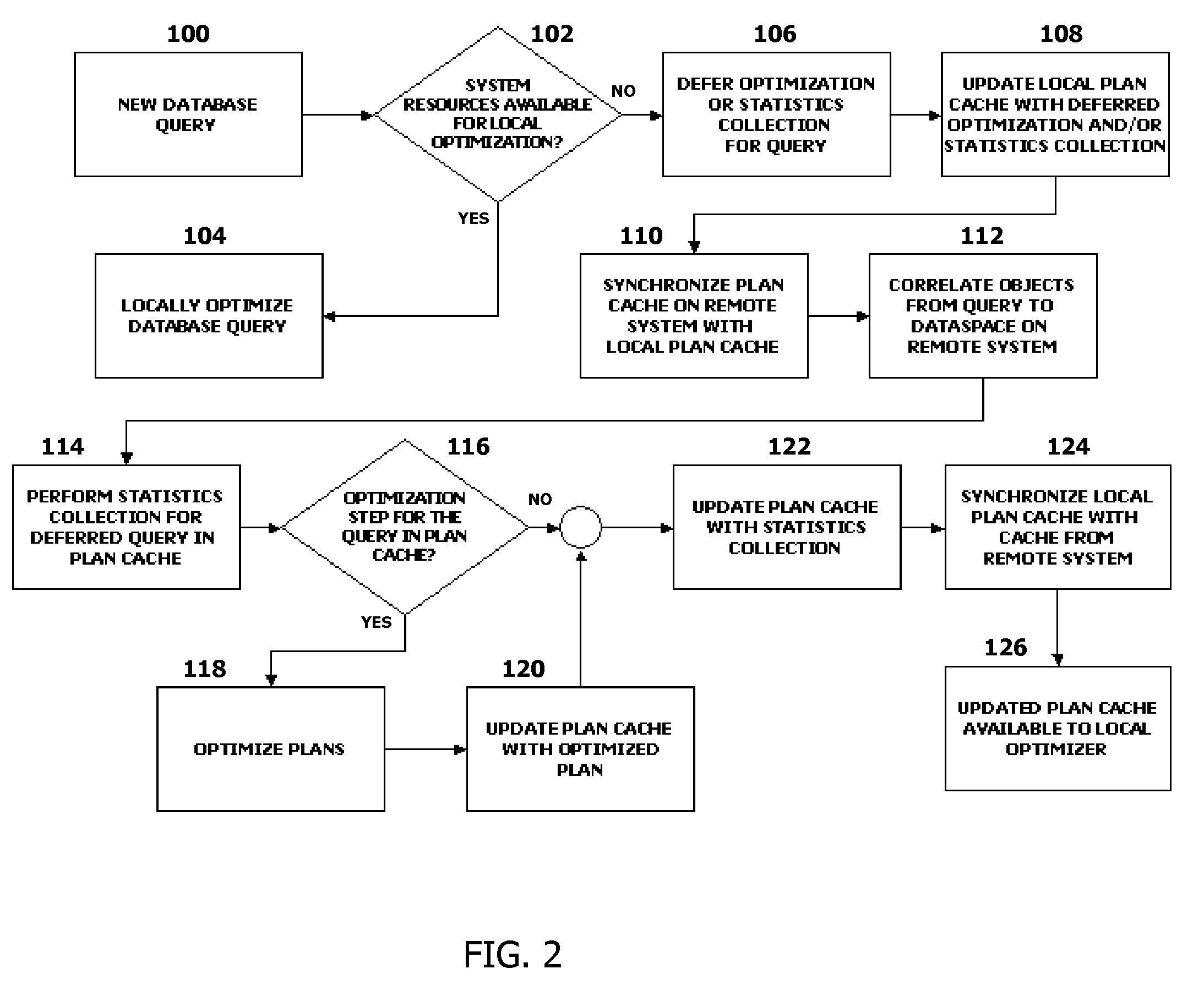Database query optimization utilizing remote statistics collection
a database and statistics collection technology, applied in the field of database query optimization, can solve the problems of query optimization, search space can become quite large depending, and it is impossible, or at least inadvisable, to try all possibilities
- Summary
- Abstract
- Description
- Claims
- Application Information
AI Technical Summary
Benefits of technology
Problems solved by technology
Method used
Image
Examples
Embodiment Construction
Embodiments consistent with the invention may be configured to identify queries needing statistics collections, some needing deep statistics collections, and transfer this work to a remote system such as a High Availability solution, for example, potentially using a local and remote plan cache. Statistics collections are then performed on any remote system (or partition) with up-to-date copies of databases, a task that is often unfit for a production system. Deep statistics collection may also include statistics computations that do not require dataspace access such as predicate transformations. The deep statistics collection data may be gathered and query plans may be reoptimized on the remote system if the statistics used in the initial optimization have changed drastically. The communication between the local, production and the remote systems may be accomplished using a remote plan cache, for example. Statistics changes and plan changes may also be applied to the local plan cach...
PUM
 Login to View More
Login to View More Abstract
Description
Claims
Application Information
 Login to View More
Login to View More - R&D
- Intellectual Property
- Life Sciences
- Materials
- Tech Scout
- Unparalleled Data Quality
- Higher Quality Content
- 60% Fewer Hallucinations
Browse by: Latest US Patents, China's latest patents, Technical Efficacy Thesaurus, Application Domain, Technology Topic, Popular Technical Reports.
© 2025 PatSnap. All rights reserved.Legal|Privacy policy|Modern Slavery Act Transparency Statement|Sitemap|About US| Contact US: help@patsnap.com



